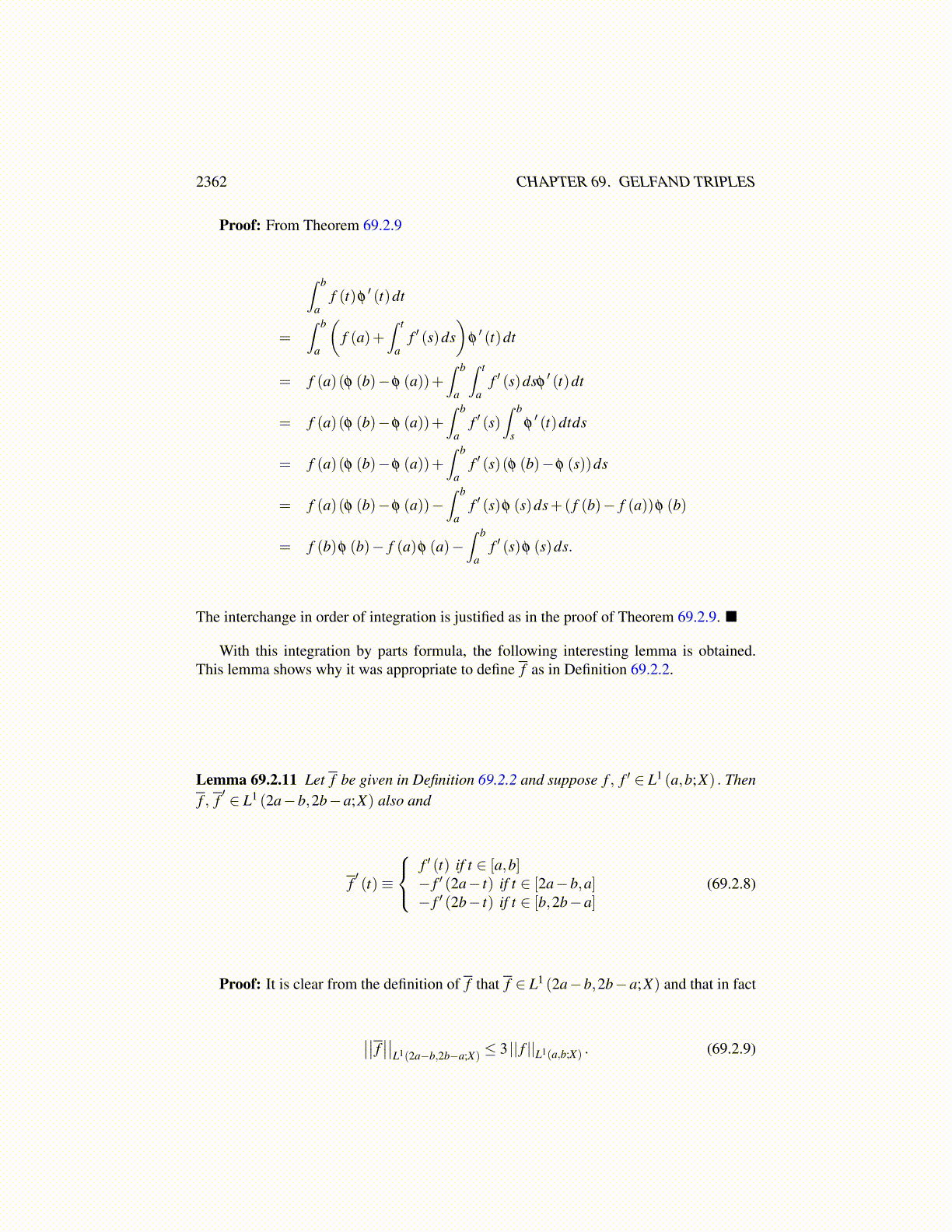
2362 CHAPTER 69. GELFAND TRIPLES
In particular, you can define f (a) to be the initial value of this continuous function. Itturns out that an identical theorem holds in this case. To begin with here is the same sortof lemma which was used earlier for the case of scalar valued functions. It says that iff ′ = 0 where the derivative is taken in the sense of X valued distributions, then f equals aconstant.
Lemma 69.2.8 Suppose f ∈ L1 (a,b;X) and for all φ ∈C∞c (a,b) ,
∫ b
af (t)φ
′ (t)dt = 0.
Then there exists a constant, a ∈ X such that f (t) = a a.e.
Proof: Let φ 0 ∈C∞c (a,b) ,
∫ ba φ 0 (x)dx = 1 and define for φ ∈C∞
c (a,b)
ψφ (x)≡∫ x
a[φ (t)−
(∫ b
aφ (y)dy
)φ 0 (t)]dt
Then ψφ ∈C∞c (a,b) and ψ ′
φ= φ −
(∫ ba φ (y)dy
)φ 0. Then
∫ b
af (t)(φ (t))dt =
∫ b
af (t)
(ψ′φ (t)+
(∫ b
aφ (y)dy
)φ 0 (t)
)dt
=
=0 by assumption︷ ︸︸ ︷∫ b
af (t)ψ
′φ (t)dt +
(∫ b
aφ (y)dy
)∫ b
af (t)φ 0 (t)dt
=
(∫ b
a
(∫ b
af (t)φ 0 (t)dt
)φ (y)dy
).
It follows that for all φ ∈C∞c (a,b) ,
∫ b
a
(f (y)−
(∫ b
af (t)φ 0 (t)dt
))φ (y)dy = 0
and so by Lemma 69.2.1,
f (y)−(∫ b
af (t)φ 0 (t)dt
)= 0 a.e. y
Theorem 69.2.9 Suppose f , f ′ both are in L1 (a,b;X) where the derivative is taken in thesense of X valued distributions. Then there exists a unique point of X , denoted by f (a)such that the following formula holds a.e. t.
f (t) = f (a)+∫ t
af ′ (s)ds